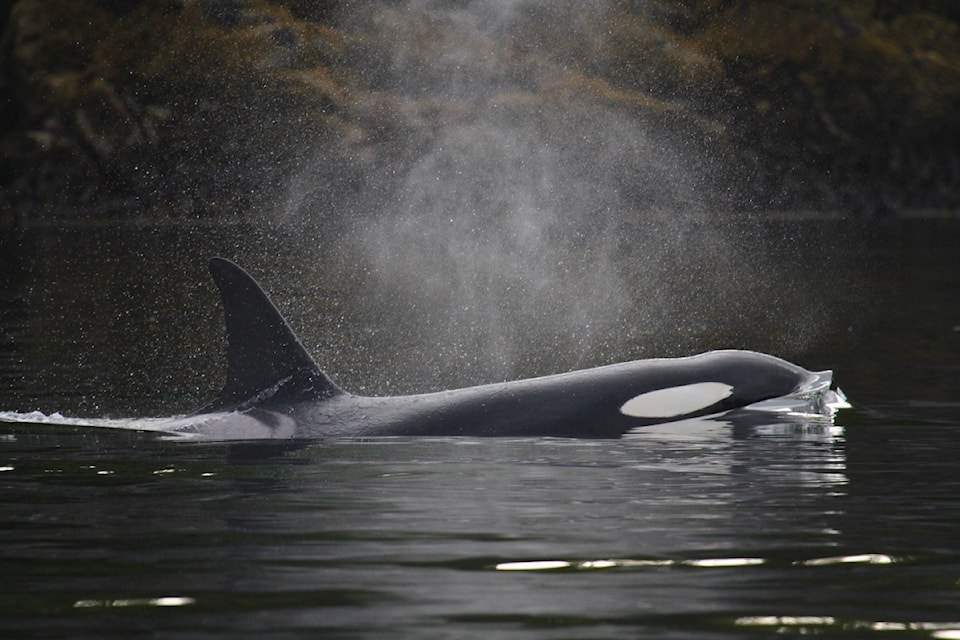Long-term whale researcher Helena Symonds has observed a significant rise in the presence of Northern Resident orcas near Alert Bay this summer, compared to previous years.
“It's almost like the old days,” said Symonds in a media release from OrcaLab, a research station on Hanson Island. She has been running the land-based whale research station OrcaLab with her partner, Paul Spong, for 44 years.
OrcaLab monitors whale behaviour in and around the Robson Bight (Michael Bigg) Ecological Reserve with remote cameras and underwater microphones called hydrophones. Collaborating with explore.org, OrcaLab shares these captivating images and sounds with the public.
In recent years, OrcaLab has observed a decline in the presence of killer whales, shifting from a consistent summer presence of multiple families within the Northern Resident Community, to just a few days with one or two families. But, this year, the whales have returned, maintaining a steady presence since July 2, said the research station.
One of OrcaLab's cameras is under water at a renowned whale “rubbing beach” on the Vancouver shore in Johnstone Strait.
Symonds noted that over the years, migrating salmon have occasionally been spotted in front of this camera. But, this year has seen a remarkable increase, with more salmon observed than all the previous years of monitoring with this camera.
“We saw a few salmon go by the camera each summer,” Symonds explained. “This year we are seeing school after school of pink salmon, Coho and Chinook.”
Symonds thinks the return of salmon abundance has allowed the whales to return to this critical habitat. She said summer gatherings such as this are critical to the culture, and well-being of Northern Resident orcas.
When asked why she thinks the salmon population is on the rise, she explained the 'Namgis First Nation, along with other Broughton First Nations, decided to close the nearby salmon farms with the hopes of facilitating the recovery of wild salmon stocks. While she does not study salmon, Symonds has authored many academic articles on her research on orca acoustics, the social dynamics of orca behaviour, and the effects of human activities on orcas and their habitats.
"It looks like this is working! The sheer number of salmon leaping throughout the area reminded me of the early days of my research here," she said.
Dan Svanvik, a hereditary chief and former 'Namgis First Nation elected chief, said shuttering the salmon farms has had a significant positive impact on wild salmon returns. Svanvik, along with two other First Nations, oversaw the closure of 17 salmon farms operated by salmon farming giants Mowi and Cermaq.
“We did extensive pathogen research in these salmon farms during their last years of operation here, we know what happens in these farms," he said in the release.
The OrcaLab can be visited online at: http://www.orcalab.org. The orchive, an archive of orca sounds, is available at http://orchive.cs.uvic.ca.



